In today’s homes — whether it’s a cozy apartment, a trendy loft, or a modern house — maximizing space while adding natural beauty is a top priority for plant lovers. One of the most stylish and practical ways to do this is by hanging plants from the ceiling. Not only does this approach free up precious floor and shelf space, but it also creates a lush, floating indoor jungle vibe that’s hard to beat.
In this comprehensive guide, we’ll walk you through everything you need to know about how to hang plants from the ceiling for better space. From choosing the right plants and hardware to hanging methods and care tips, you’ll learn how to transform your space into a green sanctuary without clutter.
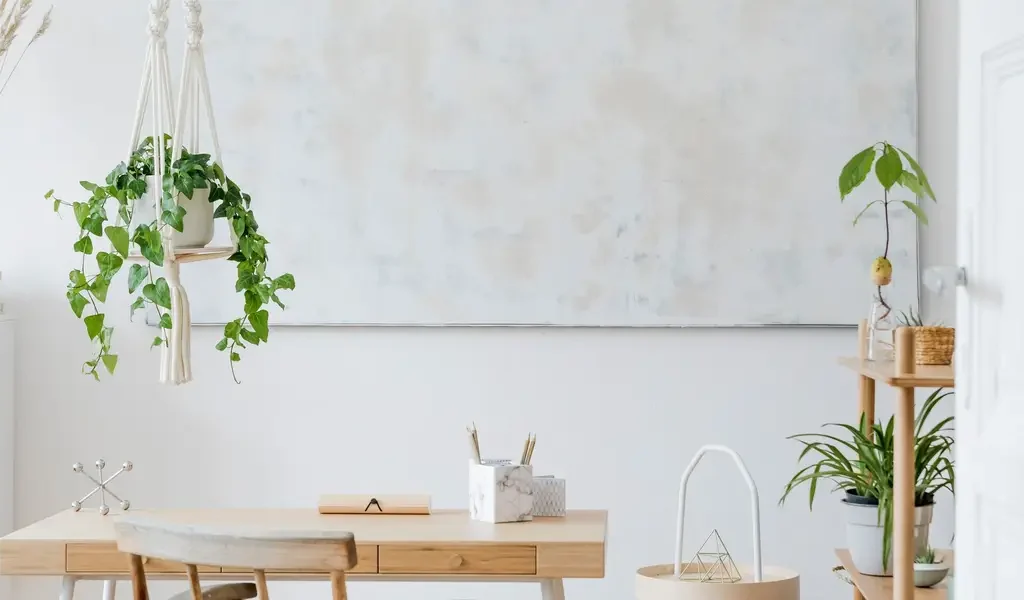
Why Hang Plants from the Ceiling?
Before we dive into the how-to, let’s explore why this trend has become so popular.
Benefits of Hanging Plants Indoors:
- Maximizes vertical space in small homes, apartments, or tight corners.
- Adds visual interest and height to your decor.
- Improves air quality and reduces indoor pollutants.
- Keeps plants out of reach from pets and small children.
- Creates a tranquil, nature-inspired ambiance.
Whether you’re decorating a reading nook, sprucing up a bare wall, or creating a plant-filled living room, hanging plants offer a versatile and eye-catching solution.
Step 1: Choose the Right Plants for Hanging
Not every plant thrives when suspended from above. The best candidates are those that naturally trail, cascade, or stay compact.
Best Plants for Hanging Indoors:
- Pothos (Devil’s Ivy): Hardy, fast-growing, and forgiving.
- String of Pearls: Unique beaded foliage and drought-tolerant.
- Spider Plant: Easy care with charming baby plantlets.
- English Ivy: Classic cascading vine with air-purifying benefits.
- Boston Fern: Adds lush, fluffy greenery but loves humidity.
- Philodendron: Beautiful trailing stems and heart-shaped leaves.
- String of Hearts: Delicate, heart-shaped leaves with a silver sheen.
- Air Plants (Tillandsia): Require no soil and look stunning in hanging glass orbs.
Pro Tip: Choose plants based on the light conditions of your room — bright, indirect light is ideal for most hanging varieties.
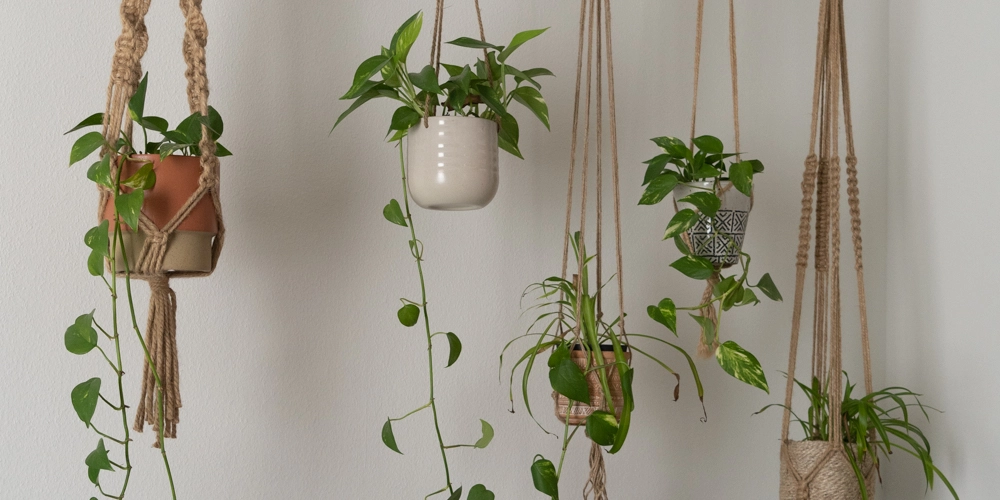
Step 2: Pick the Right Hanging Method
There are various ways to hang plants from the ceiling, depending on your decor style, plant weight, and ceiling type.
Popular Hanging Methods:
- Ceiling Hooks:
- Strong and reliable
- Ideal for heavy pots
- Available in screw-in or adhesive varieties (for lighter loads)
- Macrame Plant Hangers:
- Adds a boho-chic touch
- Holds pots of various shapes and sizes
- Available in different materials and colors
- Hanging Baskets:
- Perfect for larger, trailing plants
- Can be lined with coconut coir or moss for a natural look
- Mounted Rods or Rails:
- Great for hanging multiple plants in one area
- Adjustable and stylish for modern homes
- Wall-Mounted Hooks or Brackets:
- If ceiling hanging isn’t possible, these are a safe alternative
- Works well for lightweight plants
Step 3: Install Your Ceiling Hooks or Hardware Safely
Safety is crucial when hanging anything from the ceiling — especially a plant that gets watered and grows heavier over time.
Tools You May Need:
- Drill and drill bits
- Stud finder (for drywall ceilings)
- Heavy-duty ceiling hooks or toggle bolts
- Measuring tape
- Screwdriver
- Ladder or sturdy step stool
Installation Tips:
- Locate a ceiling joist using a stud finder; this is the safest and strongest spot for a hook.
- If no joist is available, use toggle bolts or anchor hooks designed for ceiling use.
- Pre-drill a hole slightly smaller than your hook.
- Screw in the hook until secure and test with a light tug before adding the plant.
Pro Tip: Use S-hooks or carabiners for easy removal when watering or repotting.
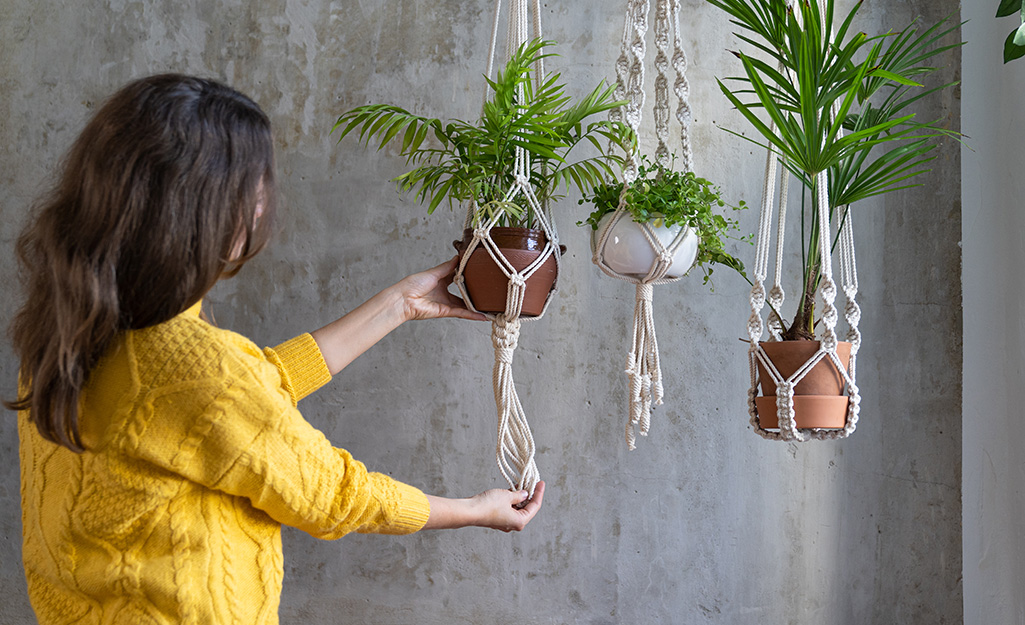
Step 4: Choose the Right Planters
Your planter not only holds the plant but also contributes to your room’s decor.
Types of Hanging Planters:
- Ceramic Pots: Classic and stylish but heavier — make sure your ceiling can support the weight.
- Woven Baskets: Lightweight and eco-friendly, perfect for a natural look.
- Glass Orbs: Beautiful for air plants or small succulents.
- Metal or Wire Baskets: Durable and modern.
- Plastic Pots: Lightweight and versatile, ideal for higher ceilings.
Ensure that your planters have proper drainage holes or an inner liner pot to avoid overwatering.
Step 5: Watering and Care Tips for Hanging Plants
Hanging plants need a slightly different care routine since they’re elevated and less accessible.
Watering Tips:
- Check moisture levels with your finger or a moisture meter.
- Water plants in place with a long-spout watering can or carefully take them down.
- Allow excess water to drain completely to avoid drips.
- Use saucers or inner pots with no-drainage setups for indoor safety.
Light and Temperature:
- Most hanging plants love bright, indirect light.
- Avoid placing them near heating vents or air conditioners.
- Rotate plants occasionally to ensure even growth.
Pruning and Maintenance:
- Regularly trim dead or yellowing leaves.
- Prune trailing vines to maintain a tidy shape.
- Fertilize every 4–6 weeks during the growing season with diluted liquid fertilizer.
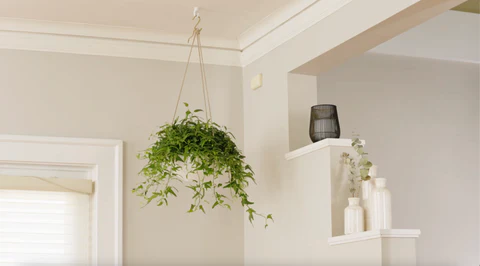
Creative Hanging Plant Ideas for Every Room
Living Room:
- Hang a cluster of three different plants at varying heights near a sunny window.
- Use macrame hangers with trailing pothos or string of pearls.
Bedroom:
- Suspend calming greenery like spider plants or English ivy above your headboard.
- Use sleek metal hangers or floating glass orbs for a minimalist look.
Kitchen:
- Hang aromatic herbs like thyme, oregano, or mint in small planters.
- Use a mounted rod or hanging rack near the window.
Bathroom:
- Ferns and air plants thrive in humidity — hang them near your shower for a spa-like atmosphere.
Common Mistakes to Avoid
- Overloading the ceiling hook: Always check weight limits for your hooks and ceiling type.
- Skipping drainage: Ensure your planters have adequate drainage or you’ll risk root rot.
- Ignoring light requirements: Hanging in a dark corner won’t do your plant any favors.
- Watering carelessly: Always watch for dripping water to avoid damage to floors and furniture.
Final Thoughts
Hanging plants from the ceiling is one of the smartest and most beautiful ways to bring nature into your home while saving valuable floor and surface space. With the right plants, secure hanging methods, and a little routine care, you can transform any room into a lush, airy, and stylish retreat.
Whether you prefer a modern minimalist look with hanging glass orbs or a boho-inspired cluster of macrame hangers, there’s a hanging plant arrangement to suit your style and space.

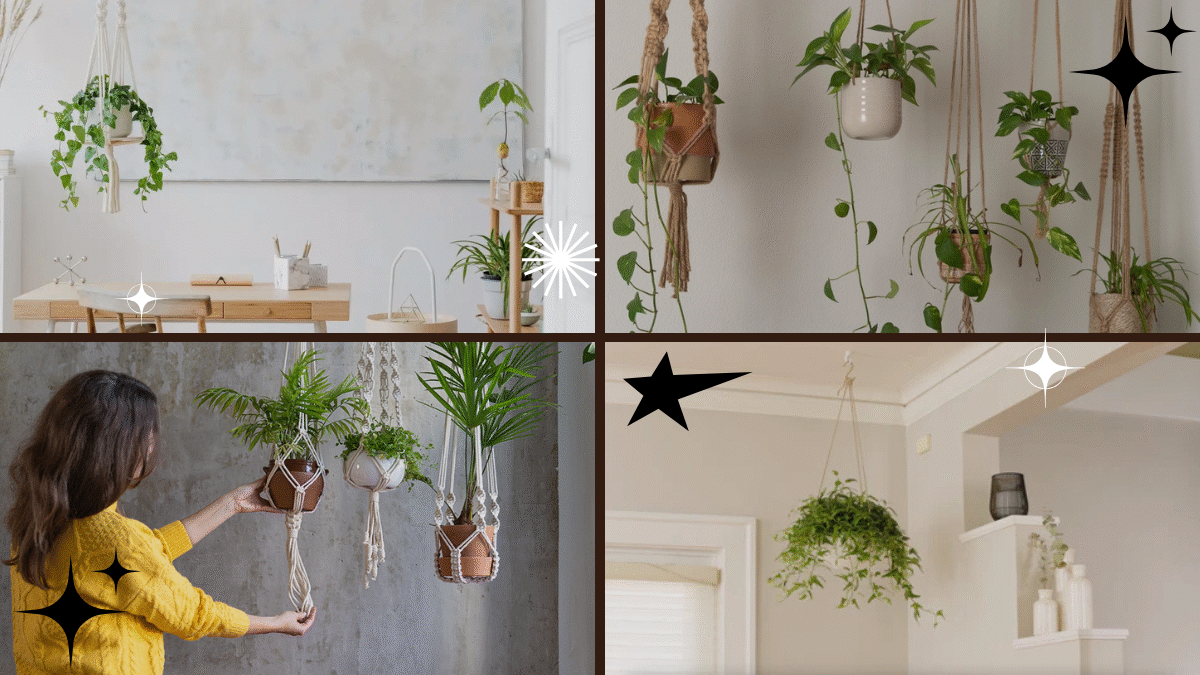



Leave A Comment